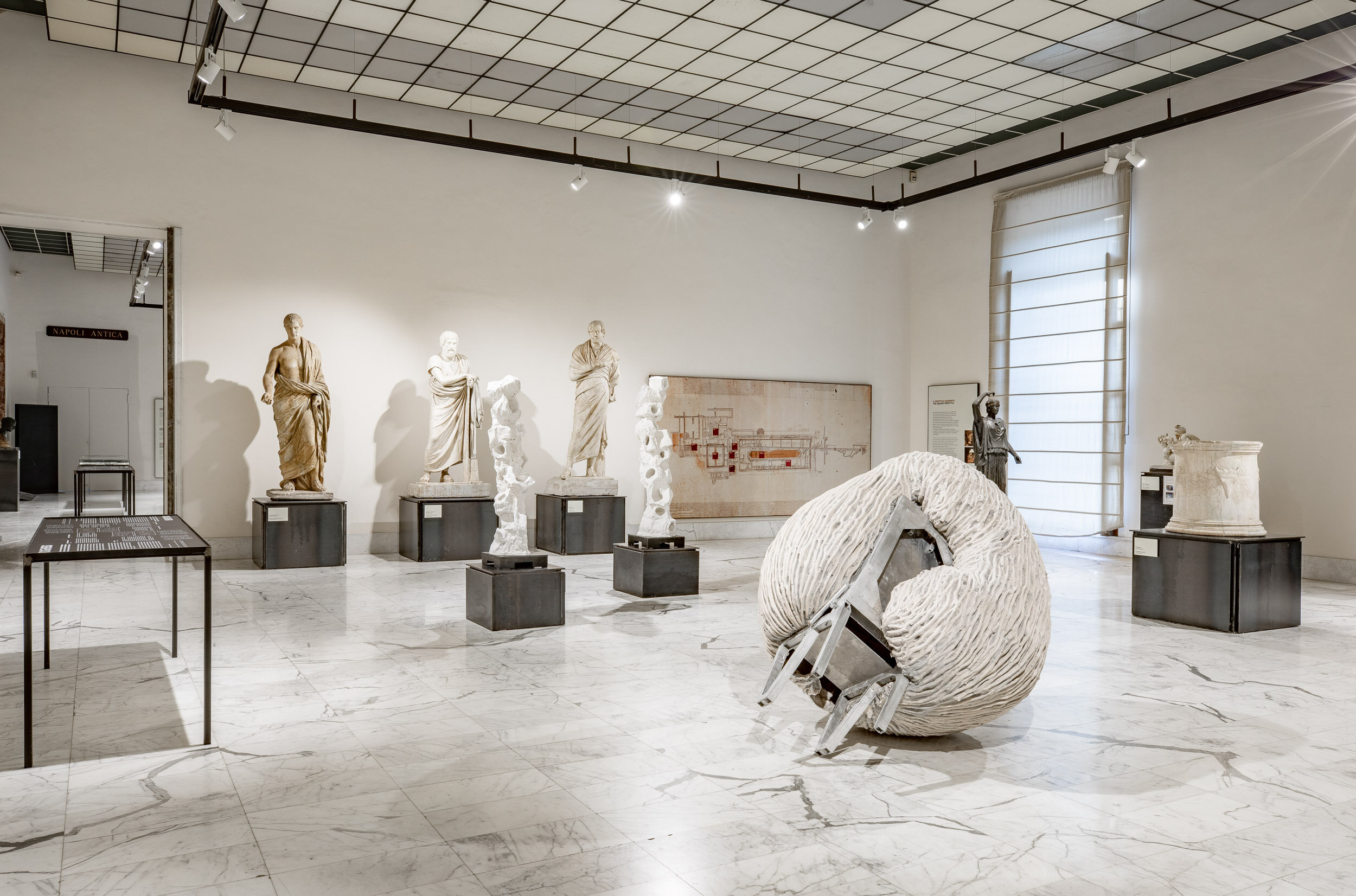ATLAS, 2019
Atlas (detail)
Brass, rotation motor, Neolithic Dalton point, electronics, wood
120 x 40 x 40 cm
2019
[ Image shows a close up of the sculpture Atlas. Image depicts a brass tubular structure with, attached at its end, a prehistoric stone point. The stone has pink tones, a rough surface and sharp edges. In the image, the stone is pointing towards the left bottom corner of the frame. ]
ATLAS
2019
This kinetic sculpture points in the direction that the Earth is going. It was developed in collaboration with Professor Emeritus Steven Dubowsky from the Department of Mechanical Engineering, Aeronautics and Astronautics at MIT. The Earth turns on its axis as it orbits around the sun. The sun in turn is spinning around the center of the Milky Way. Our galaxy, along with what scientists refer to as our local group of galaxies, is traveling towards a specific region in the universe where a gravitational anomaly indicates a high concentration of mass, pulling on its neighboring galaxies. Scientists have called this region the Great Attractor.
This sculpture uses a Neolithic Dalton stone point to indicate the position of the Great Attractor, rotating according to sidereal time so that it tracks its movement in relation to Naples both day and night.
Atlas
Brass, rotation motor, Neolithic Dalton point, electronics, wood
120 x 40 x 40 cm
2019
[ Image of a brass object on top of a dark metal plinth. The sculpture has a large brass base over which stands a brass tube. At the top of the tube it’s attached to a motor. The mechanism and wires are exposed. The motor controls a brass arm, also tubular but thinner than the one at the base of the object. The arm presents a round joint that allows the two parts to be twisted in different directions. Attached to the top part of the arm there’s a prehistoric stone point. In this image the point is directed downwards and is pointing the bottom left corner of the image. ]
Atlas (detail)
Brass, rotation motor, Neolithic Dalton point, electronics, wood
120 x 40 x 40 cm
2019
[ Image shows a close up of the sculpture Atlas. Image depicts a motor attached to a brass tubular structure.. The mechanism and wires are exposed. The motor controls a brass arm, the shape of the attachment suggests that this arm is able to rotate. The arm presents a round joint that allows the two parts to be twisted in different directions. Attached to the top part of the arm there’s a prehistoric stone point. The first segment of the arm is directed upward and forward, while the second, culminating with the stone point, points downward and away from the base. ]
Atlas (detail)
Brass, rotation motor, Neolithic Dalton point, electronics, wood
120 x 40 x 40 cm
2019
Atlas
Brass, rotation motor, Neolithic Dalton point, electronics, wood
120 x 40 x 40 cm
2019





